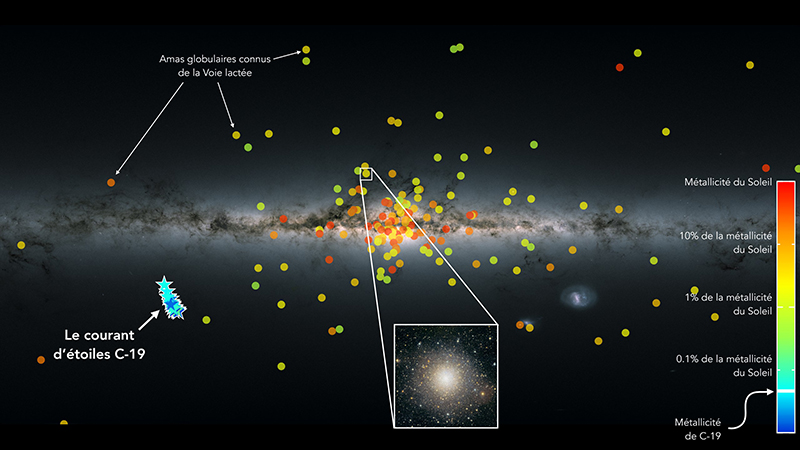
One of the more amusing results of every advancement is the discovery of new streams of stars. For over a decade, a mainstay of the American Astronomical Society (AAS) meeting each January has been the announcement of newly discovered streams of stars that are formed from the remains of dwarf galaxies and other clusters of stars that our galaxy is consuming. While there is no AAS meeting this year thanks to COVID, there is still a stellar stream being announced thanks to the work of a team led by Nicolas Martin and published in Nature.
Made of the closest to pure hydrogen and helium of any known cluster of stars, this remnant appears to be leftover from the early days of stellar evolution. The smallest stars can essentially live forever, and astronomers have been confused for decades that we see no very metal-poor small stars. Largely, we just assume, only large stars initially formed, and their supernovae enriched the material subsequent generations were built from. It is a nice story that can explain what is seen, except for this system.
Adding more complexity, this group of stars is still close together and hasn’t been stretched into an unrelated group as it orbits. Exactly how that happened, we also don’t know. All we know is the stars exist, we found them, and they currently are close together. Everything else? We leave that to the computer models. Knowing a thing is there is step one, and for today, that is enough.
More Information
CNRS press release
“A stellar stream remnant of a globular cluster below the metallicity floor,” Nicolas F. Martin et al., 2022 January 5, Nature




 Join the Crew!
Join the Crew!
 Escape Velocity Space News
Escape Velocity Space News
0 Comments